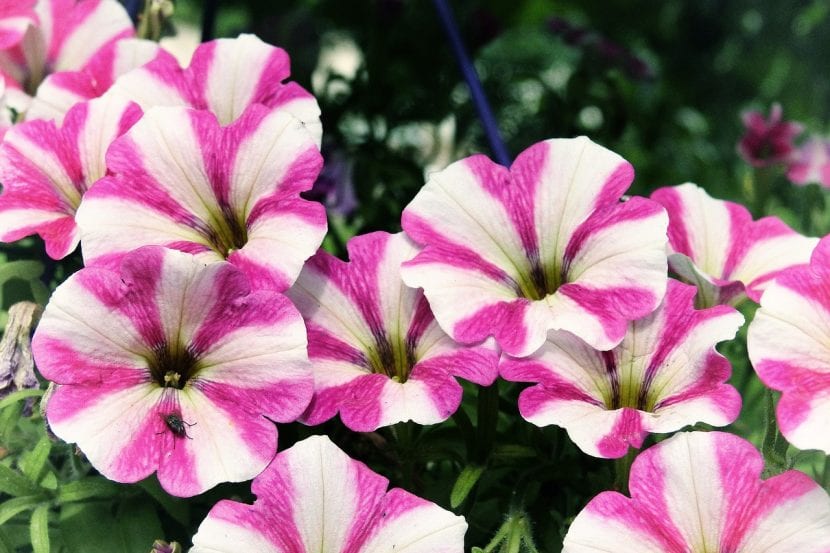
La petunia It is a herbaceous plant that produces very decorative flowers practically all year round. Growing just up to two feet tall, it can be grown both in pots and in the garden, creating fantastic floral rugs.
Its cultivation and maintenance is simple, but so that you do not have any problems we are going to tell you everything about her, the petunia.
Petunia characteristics
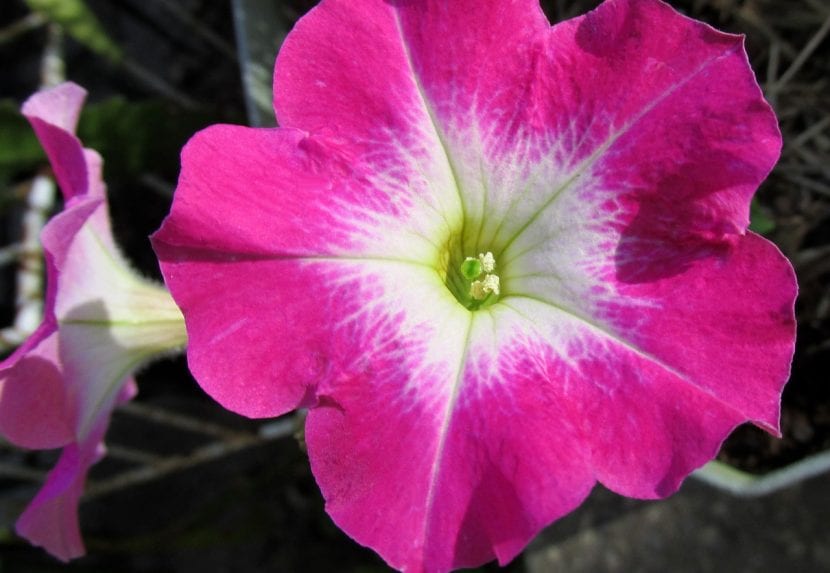
Our protagonist is a perennial plant treated as an annual belonging to the genus Petunia which comprises 23 species, the most cultivated being the Petunia x hybrida (o P.atkinsiana). They are characterized by having alternate or opposite leaves, elongated or rounded with entire edges. These are covered by a whitish villi. Its flowers are solitary and axillary, with a trumpet-shaped corolla and 3 cm in diameter. It can be any color except orange, green, and black.
Its growth rate is quite fast, blooming a few months after the seed has germinated.
How do you take care of yourself?
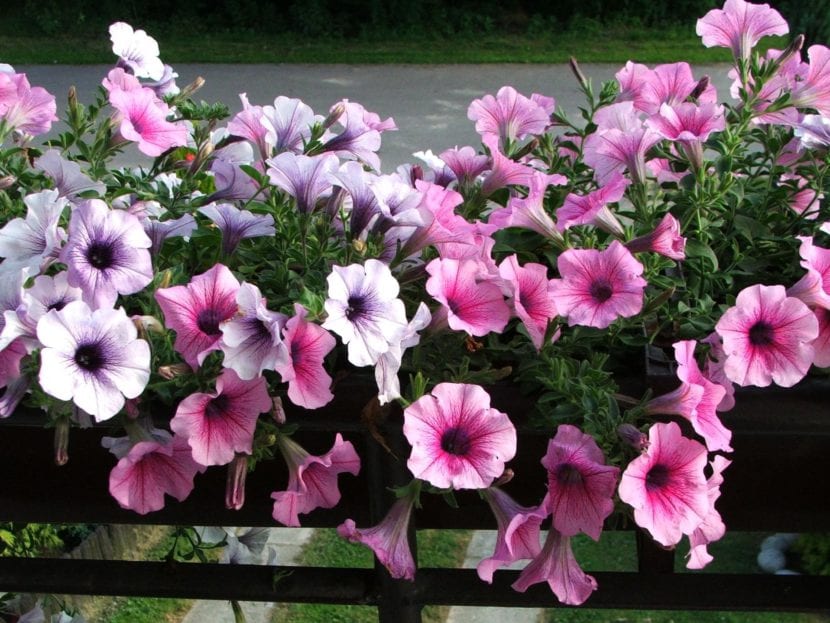
If you want to enjoy this plant, here is how to take care of it:
Location
It is important that is located in a sunny exposition so that it can have a good development and, consequently, an excellent flowering. It can also be in semi-shade as long as you give it a minimum of 4 hours of sunlight a day.
Irrigation
Irrigation it has to be very frequent: daily in summer and every 2-3 days the rest of the year.
Earth
Depending on whether you are going to have it in a pot or in the garden, you will need one or another type of soil:
- Flower pot: You can use universal growing medium for plants mixed with 30% perlite or washed river sand.
- Garden: It is not demanding, but if you have a poor and / or compact soil, I advise you to dig a hole large enough to fit a block (of those that are hollow), insert it and fill it with the substrate mentioned above.
Subscriber
Throughout the growing and flowering season, that is, from early spring to late fall, it is highly recommended to fertilize it with liquid fertilizers for flower plants that are already sold ready to apply, or with guano (liquid). Regardless of which one you choose, you must follow the instructions specified on the product packaging.
Multiplication
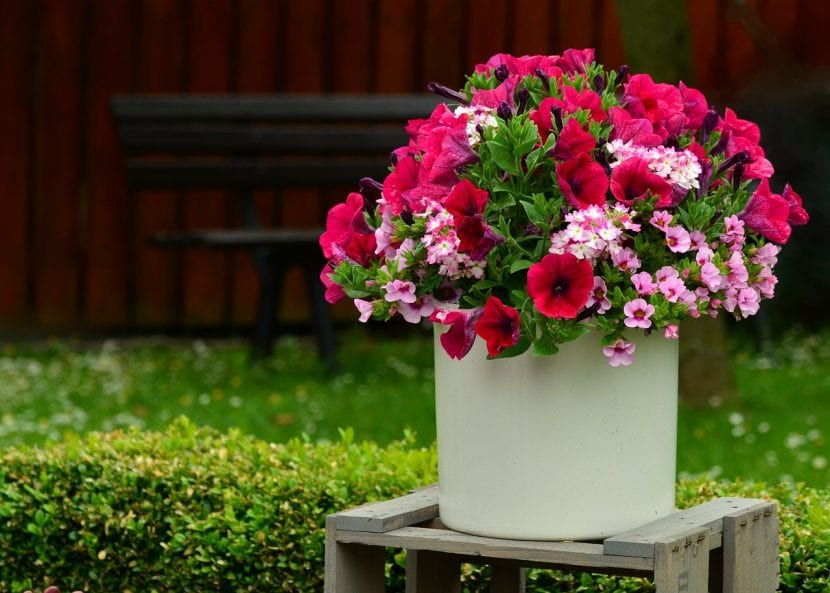
To have more specimens, the seeds can be sown at the end of winter or in spring. following this step by step:
- The first thing to do is fill a seedbed (pots, milk containers, glasses of yogurt, trays, ... or whatever you have more within reach) with universal culture substrate mixed with 30% perlite. Also, if it is more comfortable for you, you can buy ready-to-use seedbed substrate in nurseries.
- Afterwards, you have to place the seeds separately, avoiding putting many in the same seedbed. To give you an idea of how many can fit, you should know that no more than 3 should be put in a 10,5cm diameter pot.
- Then cover them with a thin layer of substrate, just so they are not directly exposed to the star king.
- OPTIONAL: you can sprinkle a little copper or sulfur to prevent the appearance of fungi.
- Finally, water conscientiously, soaking the whole earth well.
The first seeds will germinate after 7-15 days.
Pruning
Act quickly. remove dead, diseased, or weak leaves and wilted flowers with scissors previously disinfected with pharmacy alcohol.
Pests
Petunia is affected by several pests, which are:
Red spider
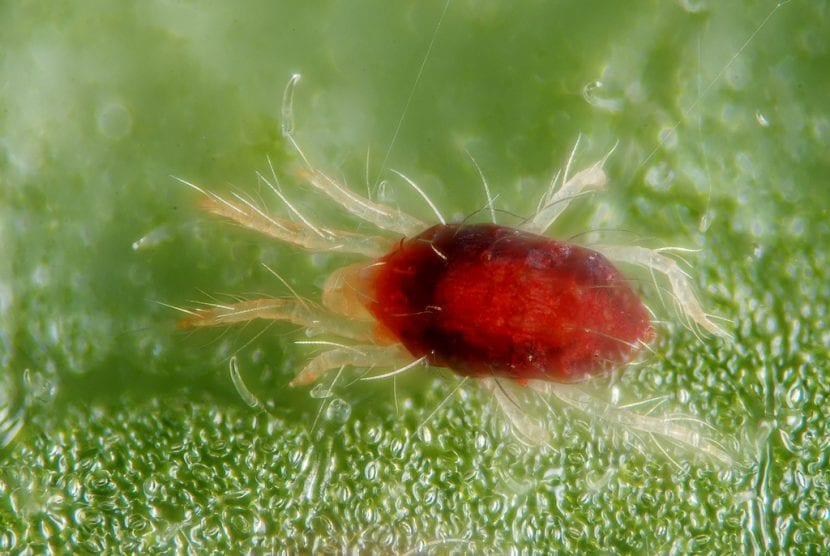
They are mites very similar to spiders, red in color, which adhere to leaves to feed on their cells. They are a bit difficult to see with the naked eye, but you will know they are present if you see cobwebs.
The fastest way to eliminate them is with acaricides.
Snails and slugs
They can eat the whole plant, so it is very important to use remedies that repel and / or eliminate them, like beer or diatomaceous earth.
Worms
Some nocturnal butterfly larvae they feed on the leaves and flowers. Therefore, the plant must be treated with permethrin.
Leaf miner
Phytomiza fly larvae they make galleries in the leaves. All the affected leaves must be removed and the plant treated with powerful insecticides, such as Chlorpyrifos.
Aphids
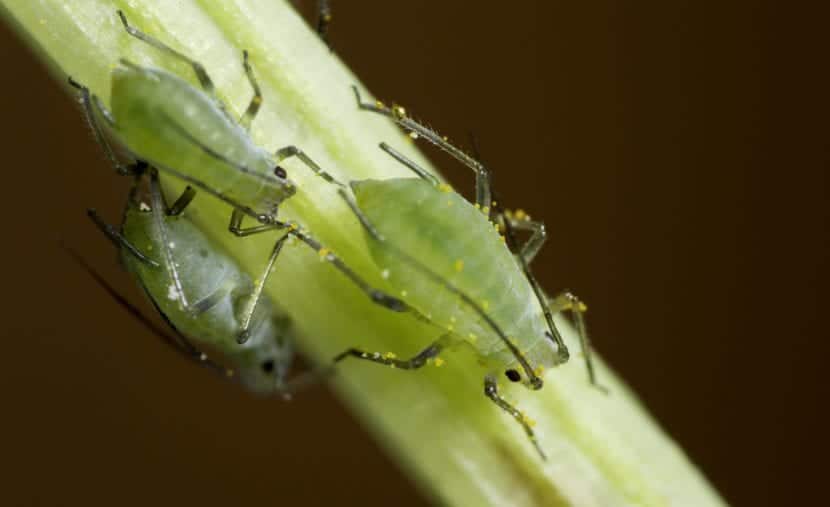
They are parasites of about 0,5cm in length of green, yellow or brown color that They also feed on the leaves and flower buds.
To eliminate them, you can place a yellow sticky trap, or with systemic insecticides.
Management
Yellowing
If the leaves start to turn yellow, probably due to excessive watering. You have to reduce the frequency of it and treat the plant with fungicides to prevent fungi.
bacteriosis
Pseudomonas bacteria produce wilting and death of the plant. There is no treatment.
Stem rot
Mushrooms Fusarium, Rhizoctonia or Sclerotinia sclerotiorum, produce rotting of the stem, which will turn a greenish-brown color.
There is no effective treatment. It is best to get rid of the plant and use new substrates when you go to buy another.
Root rot
Phytophthora fungus causes root rot, especially of young plants. The only way to avoid this is by controlling the risks and doing fungicide treatments once a month.
Rusticity
Petunia is able to withstand sub-zero temperatures, even strong frosts, but during the second year it has a poor flowering, which is why it should be renewed.
What is petunia for?
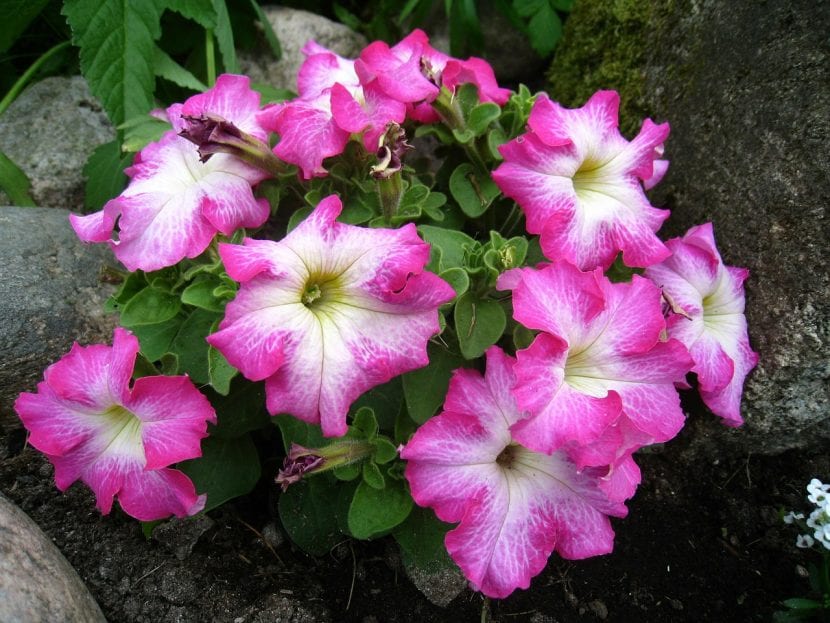
Petunia used as an ornamental plantEither in the garden or in a pot. As we have seen, it does not require complicated care to maintain itself, and it is so easy to achieve that it is really worth reserving a space.
In addition, you can make whatever you want with it: floral rugs, flowerbeds, compositions, or have it as a table plant.
Where to buy it?
It is such a common plant that you can get it during the spring at nurseries, garden stores and, of course, at local markets. It has a price of only 1 euro, which will allow you to get more than one copy if you wish.
Petunia is a very interesting herb, don't you think?